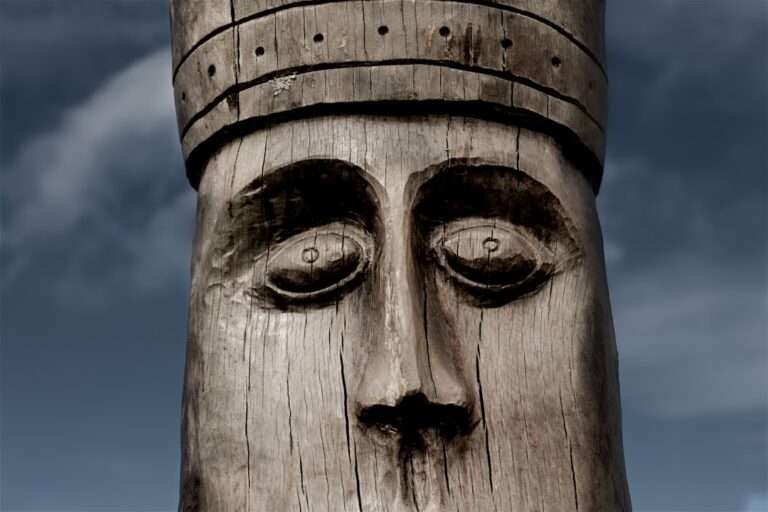What was the significance of the Ankh in ancient Egypt?

A symbol of life and immortality in ancient Egyptian hieroglyphics, the Ankh is also called the key of life, the key of the Nile, or crux ansata. The Early Dynastic Period (c. dated from 3150 to 2613 BCE) and has grown to be one of the most well-known symbols of historic Egypt. A cross with a loop at the top, akin to a key or mirror, is how the Ankh gets its unusual shape.
Key Takeaways
- The Ankh is an ancient Egyptian symbol that represents life and immortality.
- It is often depicted being held by gods and goddesses in ancient Egyptian art, symbolizing their ability to grant life.
- The Ankh is closely associated with religious and spiritual beliefs in ancient Egypt, representing the key to the afterlife.
- It is commonly found in art and architecture, including on temples, tombs, and jewelry, as a symbol of protection and eternal life.
- The Ankh was also used in burial practices, believed to ensure a person’s immortality in the afterlife, and continues to be a popular symbol in modern culture.
The Ankh is usually connected to gods and pharaohs in ancient Egyptian artifacts, where it is frequently portrayed in their hands or around their necks. The Ankh, which was highly significant in ancient Egyptian culture, represented more than just life; it also symbolized eternal life & regeneration. Considered to have magical and protective qualities, the Ankh was important in many religious and spiritual instances.
Due to its strong association with the afterlife, it was especially common in funerary practices, often appearing in tombs and burial art. Ankh recognition & use in modern times are largely due to its enduring significance in ancient Egyptian civilization. Because of this, it transcends its original cultural context & continues to be a timeless and iconic symbol of life and immortality. The Life, Death, and Rebirth Cycle. The idea of divine unity & the never-ending cycle of life, death, and rebirth are also connected to the Ankh. The Nile River, which was vital to the wealth and fertility of ancient Egypt, is associated with the Ankh in addition to being a symbol of life and immortality.
The Ankh’s top loop is believed to be a representation of a sandal strap, which the ancient Egyptians used to fasten their sandals while they walked through the rich mud that the Nile’s yearly flooding left behind. Authority from above, defense, & power. Beyond just standing for life & fertility, the Ankh also represents ideas of strength, defense, & divine authority. It was frequently shown being held by gods and goddesses, signifying their capacity to grant their devotees protection and life. Enchanted qualities and spiritual direction. In addition, the Ankh was thought to possess magical abilities that could drive away evil spirits & offer wearers or carriers protection & spiritual guidance.
The Ankh was closely linked to a number of gods and religious rites in ancient Egypt, giving it immense religious and spiritual significance. As a symbol of their functions as life-givers and guardians of the afterlife, it was frequently shown being held by gods and goddesses like Isis, Osiris, Hathor, and Ptah. The Ankh was also used in religious rites & ceremonies, where it was thought to have the ability to grant the worshippers protection, blessings, and eternal life. In ancient Egyptian religion, the Ankh’s connection to the afterlife held particular significance. It was frequently portrayed in funeral art and tombs, signifying the departed’s journey to the afterlife & their hope for rebirth and eternal life.
In burial rites, the Ankh was also used as an amulet to protect the deceased’s journey to the afterlife or placed on mummies. The religious & spiritual significance of the Ankh went beyond ancient Egypt and had a lasting impact on various cultures & belief systems across time. Due to its connotations of life, immortality, and divine protection, it became a potent symbol that cut across cultural divides and is still respected and acknowledged today. The Ankh was a common motif in Egyptian art and architecture, appearing on jewelry, tombs, temples, & common objects. The representation of life, fertility, and divine protection was frequently seen in sculptures, paintings, and relief carvings.
In architectural designs, the Ankh was also employed as a decorative element in columns, doorways, and lintels, where it functioned as a picture of the pharaohs’ divine authority and power. The Ankh was a common motif in ancient Egyptian jewelry in addition to being used in art and architecture. Both men & women would frequently wear it as a pendant or amulet to represent their faith in the strength of life, protection, and heavenly favors. In keeping with the Ankh’s broad appeal and importance in ancient Egyptian society, it was also utilized as a decorative motif on apparel, furnishings, and household goods.
In addition to acting as a visual symbol of life, fertility, and heavenly protection, the Ankh’s use in ancient Egyptian art and architecture also emphasized the object’s religious and spiritual significance. Its pervasive influence on art & architecture throughout history is demonstrated by its continued presence in monuments and artifacts from the ancient Egyptian culture. The Ankh was important to Egyptian burial customs & beliefs regarding the afterlife.
Symbolizing the journey of the departed to the afterlife and their hope for eternal life and regeneration, it was frequently portrayed in tombs and funerary art. In burial rites, the Ankh was also used as an amulet to protect the deceased’s journey to the afterlife or placed on mummies. Ankhs were used in funeral rites and were also connected to a number of funerary deities, including the god of the afterlife Osiris, who was frequently pictured clutching an Ankh in his hand. This connection strengthened the conviction that the Ankh could grant blessings, defense, and everlasting life to the departed on their way to the hereafter.
Due to its central role in ancient Egyptian funerary practices & its significance as a symbol of hope for eternal life and regeneration, the Ankh became associated with burial and beliefs about the afterlife. Its continued influence on ancient Egyptian ideas about death and the afterlife is demonstrated by its enduring presence in tombs and funerary art. Religious Traditions Regarding the Ankh.
Due to its widespread usage as a symbol of life, fertility, and divine favors, the Ankh has influenced many different religious traditions worldwide. The Popular Culture of the Ankh. When it appears as a decorative motif in jewelry, clothes, tattoos, and other artistic expressions, it is clear that it has endured in popular culture.
Numerous subcultures have also embraced the Ankh as a representation of disobedience, spirituality, and individual strength. A timeless representation of immortality and life. People’s imaginations are still captured by its timeless appeal as a symbol of life and immortality, which encourages artistic expression in a variety of media.
In conclusion, the Ankh has captured people’s imaginations for millennia as a timeless symbol of life, immortality, & divine protection. Its deep religious meaning & rich symbolism have made it a potent symbol that cuts across cultural divides & is still admired in the present era. The Ankh’s legacy can be seen in its enduring influence on art, religion, popular culture, and scholarly exploration throughout history.
Because of its enduring significance in ancient Egyptian culture and its lasting influence on human beliefs about life, death, and spirituality, it has always been appealing as a symbol of hope for eternal life and regeneration.
FAQs
What is the Ankh?
The Ankh is an ancient Egyptian hieroglyphic symbol that represents life.
What was the significance of the Ankh in ancient Egypt?
The Ankh was a powerful symbol in ancient Egypt, representing life, immortality, and the afterlife. It was often depicted being held by gods and pharaohs in ancient Egyptian art.
How was the Ankh used in ancient Egypt?
The Ankh was used in various religious and funerary contexts in ancient Egypt. It was often depicted in tombs, temples, and on amulets, and was believed to provide protection and ensure eternal life in the afterlife.
Was the Ankh only used in ancient Egypt?
While the Ankh is most commonly associated with ancient Egypt, similar symbols have been found in other ancient cultures, such as the Mesopotamian and Hittite civilizations. However, the Ankh holds a unique significance in ancient Egyptian religious and funerary beliefs.





